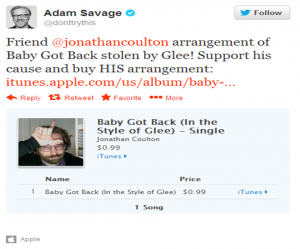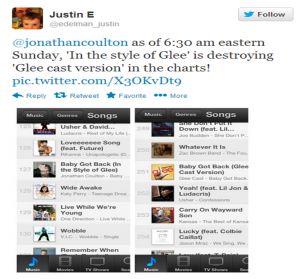If you ask scholars on the pessimistic end of the spectrum, like Mark Andrejevic and Christian Fuchs, user-generated content (UGC) is horribly exploitative. The champions of peer production (Chris Kelty) or convergence culture (Henry Jenkins), on the other hand, tend to cheer on the cases where people produce digital objects as personally empowering and industry-challenging. Given that these are all smart people looking at the same set of relations in the world, how is this possible?
The answer is that these different scholars are actually not looking at the same relations a lot of the time. Commercial UGC, where companies make money from audience work and claim the intellectual property on it, is indeed exploitative. On the other hand, while certainly not free of problems like gender inequality, “peer production is commons-based insofar as it creates resources that are held in common or collectively,” as Bingchun Meng and Fei Wu argue in their 2013 piece Commons/Commodity: Peer production caught in the Web of the commercial market (p. 127), and it’s not exploitative.
The challenge, that is, is that digital objects that are produced by people are a lot of quite different things that we need to discuss in their specificity. Casey Fiesler, in 2008’s Everything I need to know I learned from fandom: How existing social norms can help shape the next generation of user-generated content, contends that “at one end is completely original material (no threat to copyright owners), and at the other end is wholesale copying (obvious infringement)” (p. 757). Fiesler wants to call attention to the huge gray area in the middle that gets flattened out of view by copyright’s current black/white ideas about derivativeness.
We can think about a similar spectrum in relation to exploitation, where one end is completely uncommercial (no threat of exploitation) and the other is completely sandboxed and commercialized (obvious exploitation). About the former, peer production champions are absolutely right: it’s about community and equality (provided that you are a member of the in-group) and not at all stealing people’s labor. With regard to the latter, the pessimists are right to rail against inveigling people with the promise of democracy or community only to get them to freely do work the company would otherwise have to pay someone for.
The trick, of course, is that it’s almost never black and white, almost never easily placed at an extreme end of the spectrum. It’s all gray. (However many shades you’d like, and a moment of silence here for the fact that we can no longer use the phrase “shades of gray” without invoking connotations not useful to every piece.)
This line of thinking started during my exams reading a few years ago, which produced a lot of frustration with peer production and convergence culture literature, which seemed to rely on an assumption that people were totally free, completely self-aware actors and to miss the fact that people were doing work and not getting paid.
Axel Bruns, coiner of the term produsage, points to some of the concerns in his 2012 piece Reconciling Community and Commerce?: Collaborations between Produsage Communities and Commercial Operators: among other failings, companies often “treat users’ contributions as disposable and bereft of individual value” and/or “simply assign ownership of these contributions to the organization operating the site” (p. 822). Ultimately his critique comes down on the side of turning these relationships into real collaboration and community, contending that “in pursuit of short-term gains from crowdsourcing thankless tasks, the potential for generating valuable long-term outcomes through more intensive collaboration is never fully explored” (p. 818).
As I read farther in the work making a strong argument about exploitation, however, I also got frustrated by the way that body of work seemed not to understand that people engaged in these tasks without pay because they got pleasure out of it. The question of “Why do people do this to themselves?” didn’t get asked.
As Brian Brown and Anabel Quan-Haase argue in their 2012 piece “A Workers’ Inquiry 2.0”: An Ethnographic Method for the Study of Produsage in Social Media Contexts, “we have yet to adequately grasp how the ‘users’ of Web 2.0 sites and services perceive their place in this socio-economic system” (p. 489) which seems like a pretty important piece of information to have left out so far.
Neither of the hard-line positions on exploitation works for me. I need more nuance. I need more gray. I have taken to thinking of Andrejevic/Fuchs and Jenkins as the devil and angel on my shoulders in my work, pulling me in their disparate directions, and you can assign identities there however suits your own personal feelings about those scholars.
Because the fact is: most of the time, they’re both right, but at different scales. People get community and they’re exploited labor. “Current methodologies, however, do not so justice to the complex relations that exist between Web 2.0 produsers, the sense of community engendered by the mode of produsage, and the exploitative relations between these communities and the owners of the sites” (Brown and Quan-Haase 489).
We need, then, to think much harder about “the quasi-voluntary nature of the engagement in the exploitative relationship. On the face of it, participating on social networks is a voluntary act that one enters into without being compelled by force. When the unique attributes of the contemporary communicative environment are taken into consideration, however, characterizing participation as voluntary becomes less convincing” (Brown and Quan-Haase 494).
One characteristic of “the contemporary communicative environment” is that people are still often set up as consumers. Bruns is right to contend that “the very concrete effects of traditional consumer/producer distinctions on users’ self-perceptions should not be underestimated” (p. 818). When your work is set up as secondary and reacting to the “real thing,” you’re not in a position to see its worth.
Ultimately, “where such structures in the user base form more permanent shapes, we define this as a ‘community’; where the user base continues to be so transient or atomized that structures remain impermanent, it is simply a ‘crowd’” (Bruns 819). Bruns mentions this only briefly, but I think it’s a pretty good metric for thinking about exploitation.
If we distinguish carefully between community and crowd, things become visible. We can start to see the orientation of the people involved and ask the question of whether they’re getting anything out of it. We can ask whether what they’re getting is enough, by their own internal standards.
And we can still, at the same time, hold capital accountable for exploiting them, just like we can be concerned about sports franchise owners or record labels or movie studios making money hand-over-fist when the employees they’re exploiting are making millions of dollars and generally doing alright.
Because it’s a complicated world where contradictory things can be true at the same time. It’s all gray.




